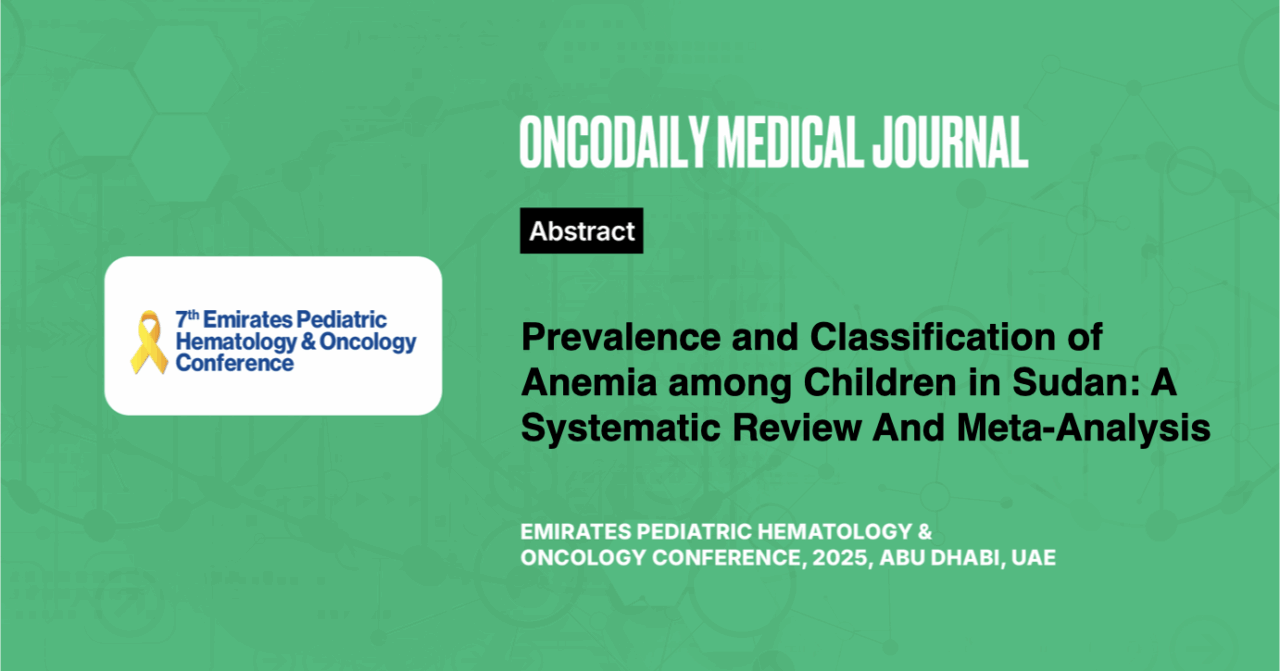Prevalence and Classification of Anemia among Children in Sudan: A Systematic Review And Meta-Analysis
Abstract
Introduction: Anemia is a major global health concern, significantly affecting children in developing countries, including Sudan. It impairs cognitive development, immunity, and growth, and contributes to socioeconomic challenges (Balarajan et al., 2011; Best et al., 2010; Denny et al., 2006; Zavaleta & Astete-Robilliard, 2017). Despite efforts by the Sudanese Ministry of Health to address anemia (FMOH, 2014), comprehensive national-level data on its prevalence among children remains scarce. This study provides the first systematic review and meta-analysis of anemia prevalence among Sudanese children to inform effective prevention strategies.
Anemia among Sudanese children is higher than in many countries (Ewusie et al., 2014; Tezera et al., 2018; Akbari et al., 2017), driven by nutritional deficiencies, infections, and sociodemographic disparities (Fondjo et al., 2020; Nambiema et al., 2019; Saboor et al., 2015). The increasing trend underscores the ineffectiveness of current interventions and the need for targeted strategies, such as dietary supplementation and infection control.
The primary objective was to estimate the pooled prevalence of anemia among Sudanese children and classify its types. Secondary objectives included analyzing trends over time and identifying regional disparities and contributing factors.
Methodology: A systematic review adhering to PRISMA guidelines was conducted (Page et al., 2021). Literature searches were performed in PubMed, Scopus, ScienceDirect, and Google Scholar (August 2021; updated December 2022). Studies reporting anemia prevalence in Sudanese children using WHO criteria (WHO, 2011) were included. Meta-analyses were conducted using random-effects models in R software (Hajissa et al., 2022; Yamin et al., 2022). Subgroup analyses explored anemia type, publication year, and regional variations. Study quality was assessed using the Joanna Briggs Institute checklist (Moola et al., 2020).
Results : The meta-analysis included 20 studies involving 8006 children (Habib Allah, 2009; Elmardi et al., 2020; Abdelrahim et al., 2009), with an estimated pooled anemia prevalence of 53.5% (95% CI 36.6–70.4%). The prevalence varied by type: unclassified anemia (62.7%), iron deficiency anemia (39.1%), and sickle cell anemia (8.7%). Regional analysis revealed the highest prevalence in Eastern Sudan (81.0%) and the lowest in Western Sudan (14.7%). Over two decades, anemia prevalence increased from 40.7% (1999–2009) to 58.1% (2016–2020).
Conclusion: Childhood anemia remains a critical public health issue in Sudan. Expanding research, fortifying foods, and implementing tailored interventions are crucial for reducing anemia’s burden and improving child health outcomes.





